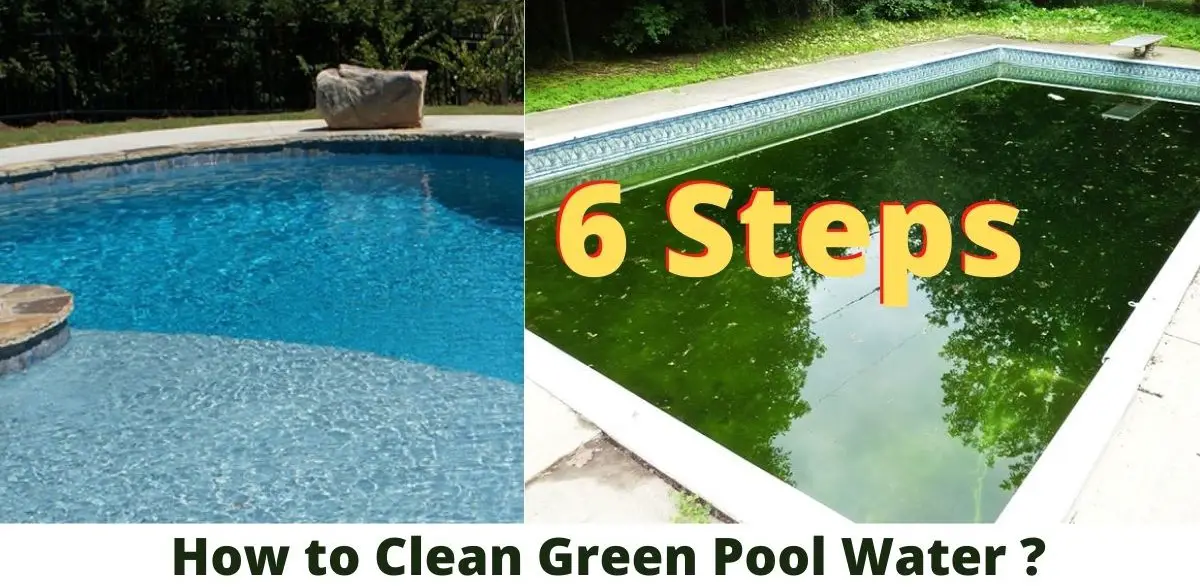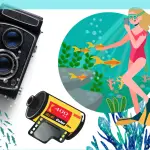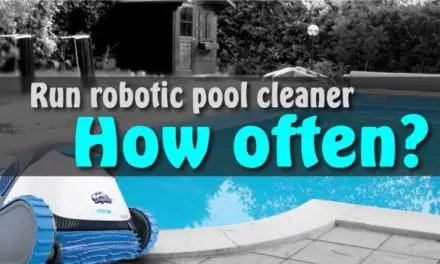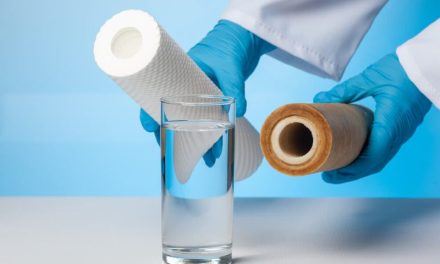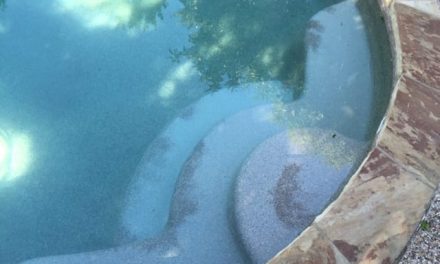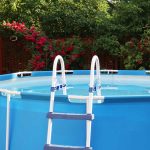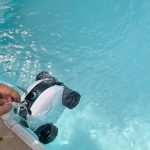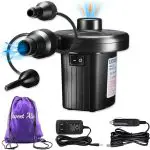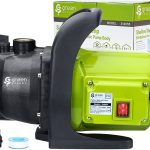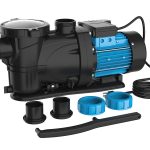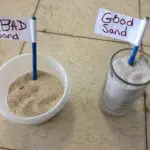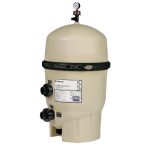If your pool has become turned green then this article is for you. This article will take you step-by-step through a way to get that nasty pool in shape. I may even cowl a few simple chemistries and filtering suggestions to save this from occurring again. All data is primarily based totally on an in-ground home pool of common size, from 12 to 15 thousand gallons. We’ll learn here how to clean green pool water fast.
Algae make a pool green, and a chemical imbalance shall be the reason algae grow. If there is sufficient free chlorine in the pool, algae may have a tough time forming. If for a few causes the chlorine can’t build up to an excessively sufficient level, algae will grow. That’s why you surprise your pool with chlorine as a part of the 6-step process below. If the green returns, you could regulate the levels of alternative chemical substances besides chlorine, as there’s extra to pool water chemistry than chlorine alone.
How to Clean Green Pool Water Fast?
- Fix whether your water chemistry may be fixed, or if it is a long way gone.
- Test the water to decide the pH balance.
- Shock the pool.
- Pump and filter the pool to regain balance.
- Brush and clear out (filter) the pool again.
- Maintain balanced chemistry.
Each and every step has been described below. All data is primarily based on an in-ground domestic pool of common size, from 12 to fifteen thousand gallons.
Step 1: How Green IS Your Pool?
Those six steps won’t be sufficient if it’s too green; maybe you need to drain your pool with acid-washed, instead of shocking it. I actually have seen so many swimming pools that were not only green but also black. In extreme instances like this, it’s far extra cost-powerful and much less time-eating to clearly drain the pool and feature it acid-washed, although it prices cash to fill up the pool.
This is my well-known rule for determining whether the pool may be handled chemically or needs to be drained: if you could see at least six to eight inches below the floor of the water, maximum likely the pool may be handled chemically. Once we set up that the pool would not want to be drained and maybe handled chemically, we will move from there.
Step 2: Test the water to define the pH balance:
There’s clearly little or no chlorine inside the pool if the pool is green. And in case you are going to be surprised. You’ll be adding a lot, so trying out for chlorine isn’t very important. But you need to take a look at pH, due to the fact if the pH may be very excessive, the shock will flip the pool cloudy. A shocked pool can be cloudy until all the useless algae and different solids are filtered out; however excessive pH will purpose a very cloudy pool.
To discover the pH, I choose to use an excessive-stop take-a-look-at kit, however, the reasonably-priced take-a-look-at strips will at the least provide you with a concept in case your pH is excessive or low. You need it to be below: 7.2 or lower.
If the pH is excessive, add one gallon of muriatic acid, which needs to be sufficient. Don’t fear that you can have brought a bit to an awful lot; due to the fact, the pool may be a little acidic (low pH) for swimming purposes but nevertheless at a terrific pH for shocking. Test the pH again after shocking and four hours of circulation.
Step 3: Shocking the Pool with Granular Chlorine:
Once your pH is below 7.2, you’re going to begin by shocking the pool with granular chlorine (calcium hydrochloride). I suggest buying a 25-pound field of granular chlorine, in place of the character one-pound bags they sell at pool shops or large chain shops. You’ll save a wonderful deal of money, and you may need chlorine in the upcoming days for small doses from time to time. Use 5 pounds of granular shock or 10 gallons (four 2.5-gallon jugs) of liquid chlorine. With the filter pump on, broadcast the chlorine consistently over the water, covering the whole pool floor, until all 5 pounds of shock, or all ten gallons of liquid chlorine, were used. Be assured to apply a great algaecide as well, which you could add after some hours of circulation. You also can add a flocking agent at this factor to the purpose of the useless algae debris clumping together.
Step 4: Pump and Filter the Pool to Regain Balance:
What kind of pool filter do you have? For your type of filter, you have to follow these steps.
- Diatomaceous Earth (DE) Filter: Before doing something else, backwash the DE filters. Add sparkling DE powder. Then shock the water pool as defined above, and run the pool pump for twenty-four hours. Make assured the pool drain is now no longer obstructed by leaves or other different materials when this pumping activity is going on. If the pool is too green you won’t able to see the drain, simply use a brush over the approximate place of the main drain line on the deep stop of the pool.
- Sand Filter: This is the same as for a DE filter, except the backwash time needs to be not less than 5 minutes.
- Cartridge Filter: Make sure that it is in good condition and rinsed thoroughly. See be aware in Step four below about cartridges.
Step 5: Brushing and Filtration of the Pool:
After 24 hours of chemical substances and circulation, you’ll see a wonderful transformation. Your lovely swimming pool should not be green any longer. It’ll nevertheless be cloudy, and it’ll want a number of brushing and filtration for the following few days. There will probably nevertheless be some cussed isolated green areas that need to be brushed.
After 24 hours, if you see your pool is still green, there may be too many incorrect chemical substances, for example, an extra phosphate or cyanuric acid (“stabilizer”).
It will take some time for the cloudiness to move away.
- For sand clearout, it will take a week or it can be more than a week sometimes.
- Cartridge filters always need to clean more than other different filters throughout the procedure: two times a day for at least two days or till the pool is clean.
- If you’ve got a DE clear out a filter, and the cloudiness does now no longer clean up, your clear-out filter can be clogged and need maintenance.
Step 6: Maintaining Your Pool in Balance:
Instructions for maintaining your pool:
- Make sure that you’ve got a trustworthy chlorinating system, whether or not it’s far an in-line, floater, or salt system. The chlorine needs to be in the pool always. Throwing a jug of liquid in the pool once a week isn’t the right method of maintaining the pool. A simple pill chlorine floater may be very powerful.
- Use a water explanation solution.
- Clean your filter. DE filters are a long way from the best filter to have. Although a chunk is extra pricey to buy at first, they’ll save you both lots of money in the lengthy run.
How to clean a green pool without chemicals?
Cleaning a Green Pool Without Chemicals Introduction Having a pool in your backyard can be an enjoyable experience for the entire family. However, when the pool turns green and is covered with algae it may seem like nothing short of chemical treatments will restore it to its former glory. Fortunately, there are several ways to clean a green pool without using harsh chemicals.
In this article, we will explore some of these methods so that you can get your pool back into great condition without introducing hazardous materials into your environment.
1. Shock Treatment:
One of the most common ways to clean a green pool without chemicals is by shocking it. Shocking means raising the chlorine level of your pool for a short period of time in order to kill off any bacteria or algae present in the water. To do this, you’ll need to purchase a special non-chlorine shock treatment from your local pool supply store. Follow all directions on the product packaging carefully before using it in your pool – usually, you’ll need to add a few tablespoons of the shock treatment per 10,000 gallons of water. Once the pool is shocked, you may need to vacuum any dead algae off of the walls and floor before adding fresh water and shock treatment again.
2. Natural Remedies:
There are also several natural remedies that can help you clean your green pool without using harsh chemicals. One popular method is to use a natural enzyme cleanser such as H2O Ener-Gel or Natural Wonders Pool Treatment. These products contain special enzymes that break down organic materials in your pool, which can help reduce the amount of algae present in the water. You’ll need to follow all directions on the product packaging carefully so that you don’t overuse it – usually, all you need to do is add a few squirts of the product each week.
3. Chlorine Alternatives:
If you don’t want to use chlorine or other harsh chemicals in your pool, there are still some alternatives that can help keep it clean and clear. For example, bromine tablets are an effective way to reduce the amount of algae present in your water without using chlorine. Bromine is naturally occurring, so it won’t introduce any additional contaminants into your pool and it breaks down quickly when exposed to sunlight.
4. Filter Maintenance:
In addition to natural remedies and swimming pool shock treatments, regular maintenance of your filtration system can also help keep your green pool under control. Make sure that you’re changing out your pool filter cartridges or sand regularly, as this will help keep debris and algae from building up in your water. You should also make sure to backwash (reverse the flow of water) through your filtration system every few weeks to ensure that it is working properly.
Cleaning a green pool without chemicals is possible with the right knowledge and equipment. Regular maintenance such as changing out your filter cartridges and brushing the walls will help reduce the amount of debris and algae. present in the water, while natural remedies such as enzyme cleansers can help break down organic materials. If all else fails, shocking your pool may be necessary in order to kill off any bacteria or algae present. With these tips, you’ll be able to get your green pool back into great condition in no time!
How Often Do You Need to Fresh Your Filter?
- DE filters: Backwash once every 3 weeks.
- Sand filters: Backwash twice every month. Backwash your sand filters for five minutes minimum; otherwise, you’ll notice filthy water shooting returned into the pool.
- Cartridge filters: Clean them once a month, unless you’ll notice algae in the water pool.
Green Pool Water AfterShock!
Why is my inground Pool Water Still Green After being Shocked? There might be many clarifications for your pool’s outstanding green after numerous shocking efforts. Our List may help you to assist you to find out why.
- Your pool substances (chemical) aren’t well-adjusted and consequently, the chlorine will not be capable to work effectively.
- For example, if the pH is simply too high (8.0 or higher), then the chlorine could be 80% useless and not able to kill the algae. Make assured that all of your pool chemical compounds are well-balanced.
- Some persons only follow the shock dosage provided on the label of the container, and this isn’t sufficient for the S.L.A.M. technique
- Follow our commands above to figure out how much shock you’ll need. Killing algae takes lots of greater chlorine than ordinary weekly shock treatment.
- If you use Algaecide, simply be aware that it will not able to fully clear a green pool. It is more powerful as a preventative measure than as a treatment to kill algae.
- Use algaecide normally on regular basis.
- Make assured that your filter is working all day and all night time during the S.L.A.M. process. Some people beings make the error of simplest walking their filter on their ordinary schedule.
- An important part of killing the algae is ensuring that there’s a consistent circulation of the pool water. You also may need to replace the filter.
Final Verdict:
So this is our complete guide about how to clean green pool water fast. Clearing green pool water is a simple task when you’ll follow the right steps. Start by testing the pH levels of your pool and adjusting them as needed. Next, backwash or clean the filter system to remove any dirt and debris in the water. Then, shock the pool with chlorine or other sanitizers to kill bacteria and algae that can cause cloudy, green water. With patience and regular maintenance, you’ll be able to enjoy your sparkling blue swimming pool all season long!

